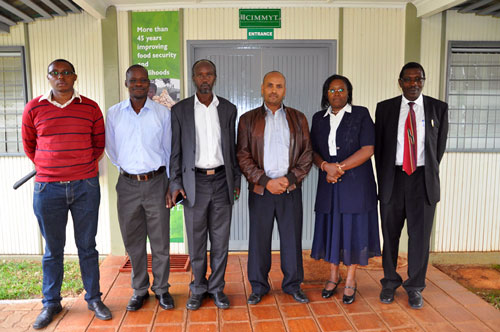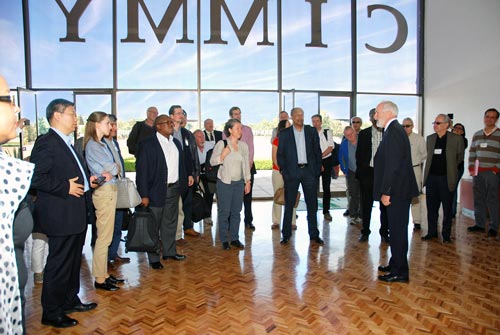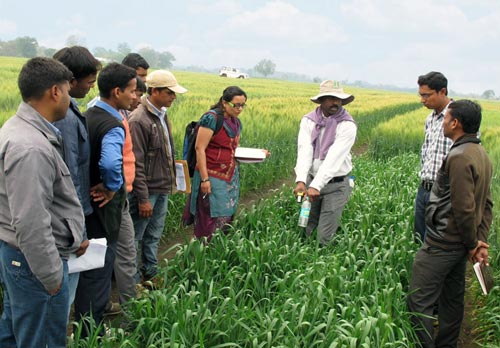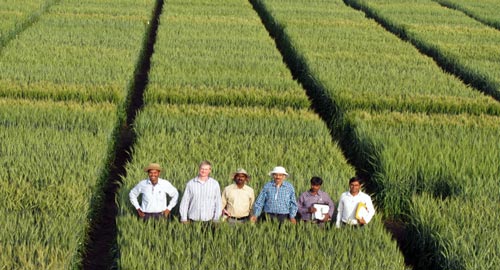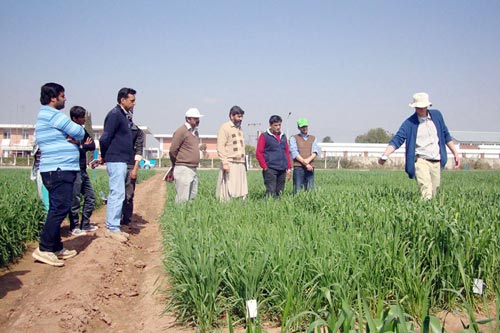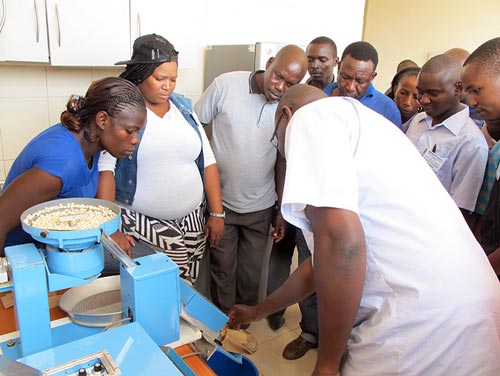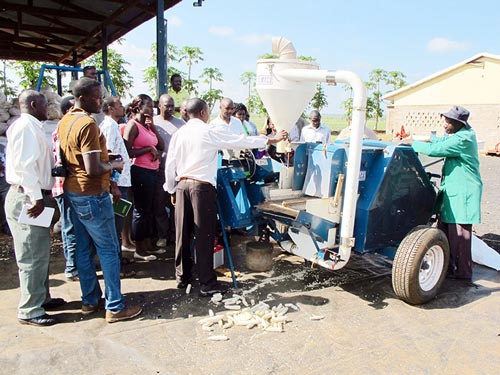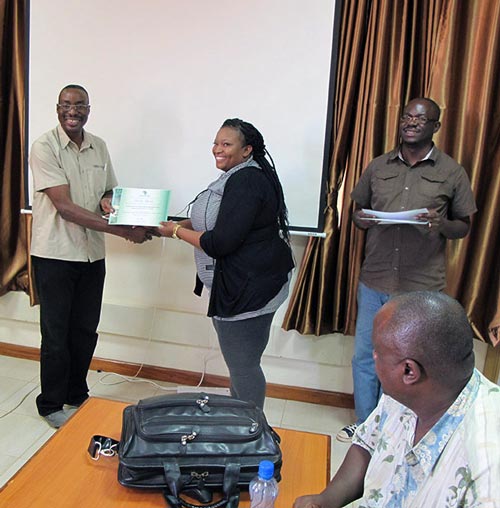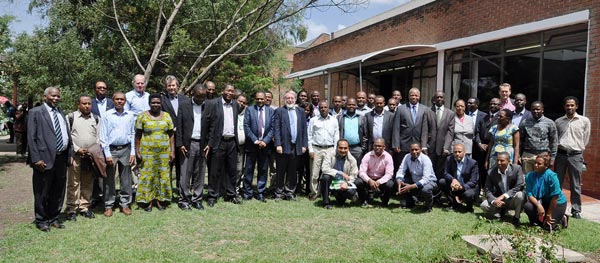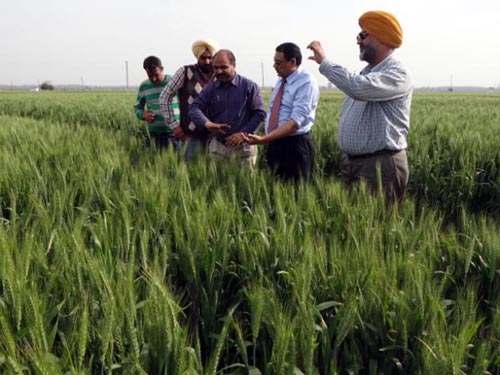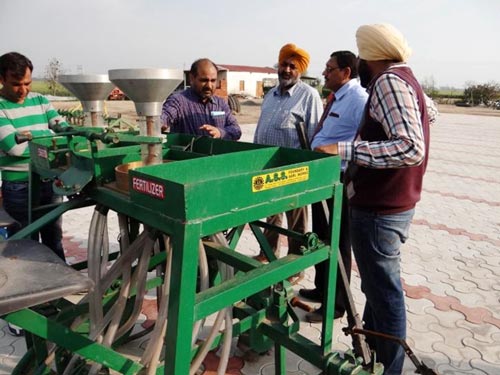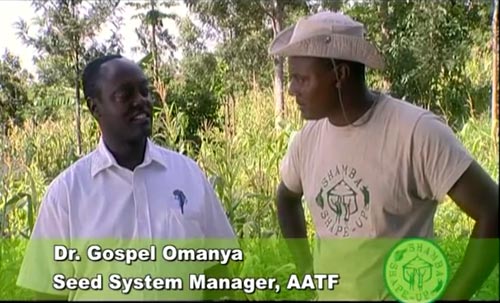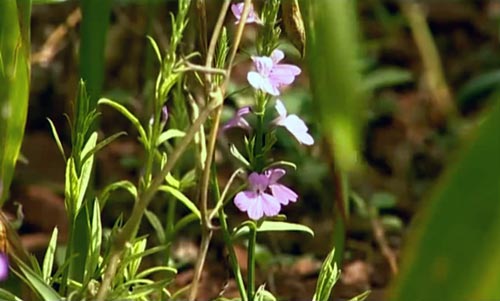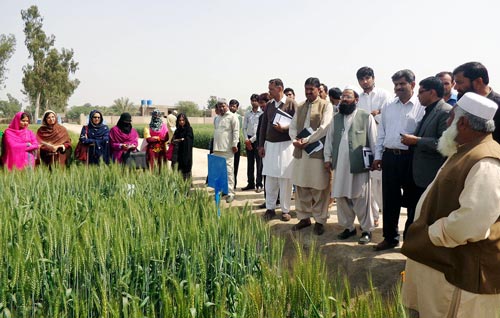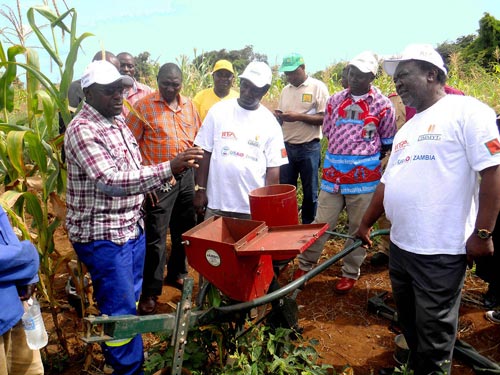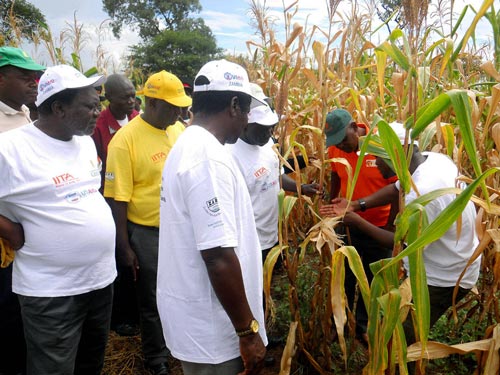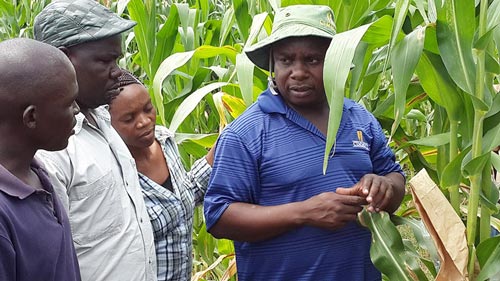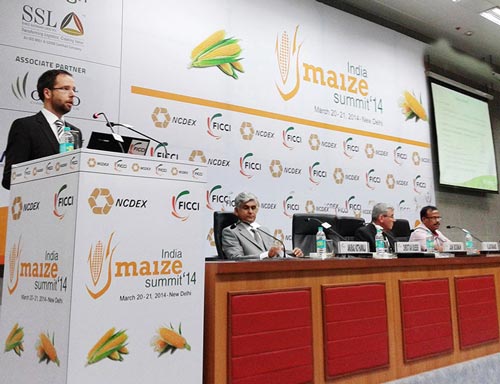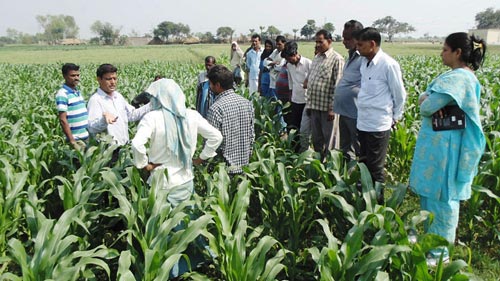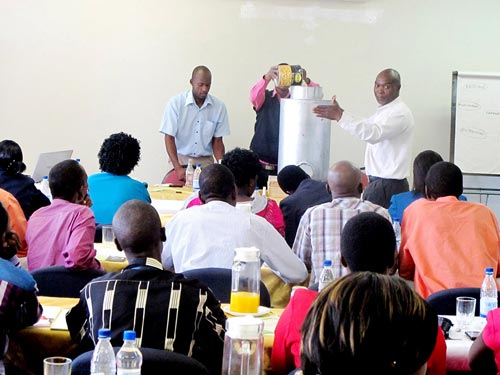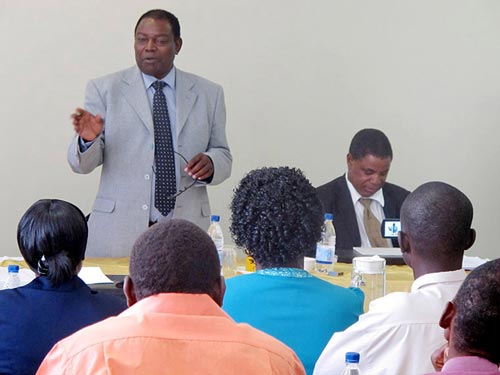Maize lethal necrosis screening facility seeing signs of success
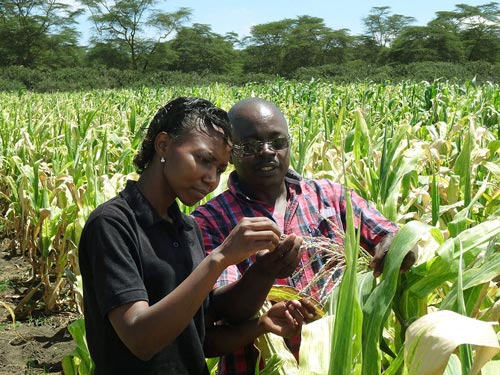
By George Mahuku and Florence Sipalla/CIMMYT
Germplasm screening at the maize lethal necrosis (MLN) screening facility at the Kenya Agricultural Research Institute (KARI) Naivasha is underway, and CIMMYT pathologist George Mahuku said some inoculated lines are showing levels of resistance.
He described the green islands among the maze of yellow in the fields as a demonstration of the success of the testing protocols being used at the site. “This is the lifeline for farmers,” he said. “Next we will be incorporating genes from these lines into adapted germplasm and using the Doubled Haploid facility in Kiboko to quickly develop inbred lines with resistance to MLN.”The deadly maize disease was first identified in Kenya in 2011 and has since been diagnosed in the Democratic Republic of Congo, Rwanda, Tanzania and Uganda. The MLN screening facility was established in 2013 with funding from the Bill & Melinda Gates Foundation and the Syngenta Foundation for Sustainable Agriculture to serve maize breeding institutions in Sub-Saharan Africa in response to 2014 the emergence of the disease.
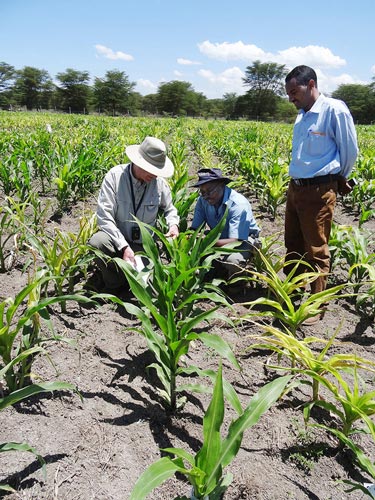
“To date, we have planted more than 19,000 different types of germplasm on 15 hectares,” Mahuku said. “This germplasm was submitted by both private and public sector partners, including CIMMYT and the International Institute of Tropical Agriculture (IITA).”
All germplasm has been inoculated, Mahuku said, and symptoms are fully visible. Operations at the facility include maintaining pure strains of the viruses that cause MLN, producing inoculum for artificial inoculation, evaluating maize hybrids and inbred lines for response to MLN and building the capacity of stakeholders including scientists, technicians, farmers and extension workers to handle the disease.
The facility also provides employment opportunities for the community, hiring more than 30 people for activities such as weeding, irrigation and disease scoring. Because the facility screens germplasm from different countries, it’s isolated from farmers’ maize plots and certified as a quarantine site. “We still do not fully understand the variability in virus strains, whether the virus strains in Rwanda, Tanzania or Uganda are the same as the ones in Kenya,” said Mahuku.
After disease evaluations, all plant debris will be disposed of by incineration. The facility has received many visitors from universities, international organizations and public and private institutions. “There is a lot of interest in learning and knowing the disease,” Mahuku said.
It recently hosted two scientists from Ethiopia who will share the knowledge gained with their colleagues and will conduct surveys to assess whether the disease is in their country. “To see all this going well is breathtaking,” said CIMMYT technician Janet Kimunye, who is in charge of virus maintenance, inoculum production and inoculations in the field and has been involved in MLN research from the beginning, initially as a consultant to CIMMYT.
“We have assembled a really good team here; watching them work way into the night and weekend is heartening,” said Mahuku. “Everybody wants a solution to this problem that is threatening their food security.”
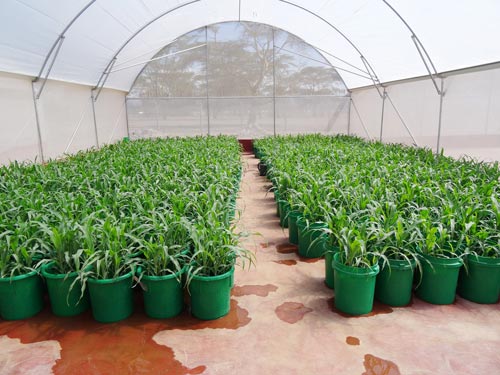
Facts about the Facility:
- Area planted: 15 ha
- Number of rows: 49,500
- Total germplasm: 19,539
- Inoculated area: 6.5 ha
- Disease expression: 4.5 ha is under disease evaluation as symptoms are expressing well
Sources of Germplasm Sources of Entries Screened
- CIMMYT/IITA: 13,699
- Private sector (seed companies): 3,781
- Public institutions (NARS): 2,059
- Total: 19,539
